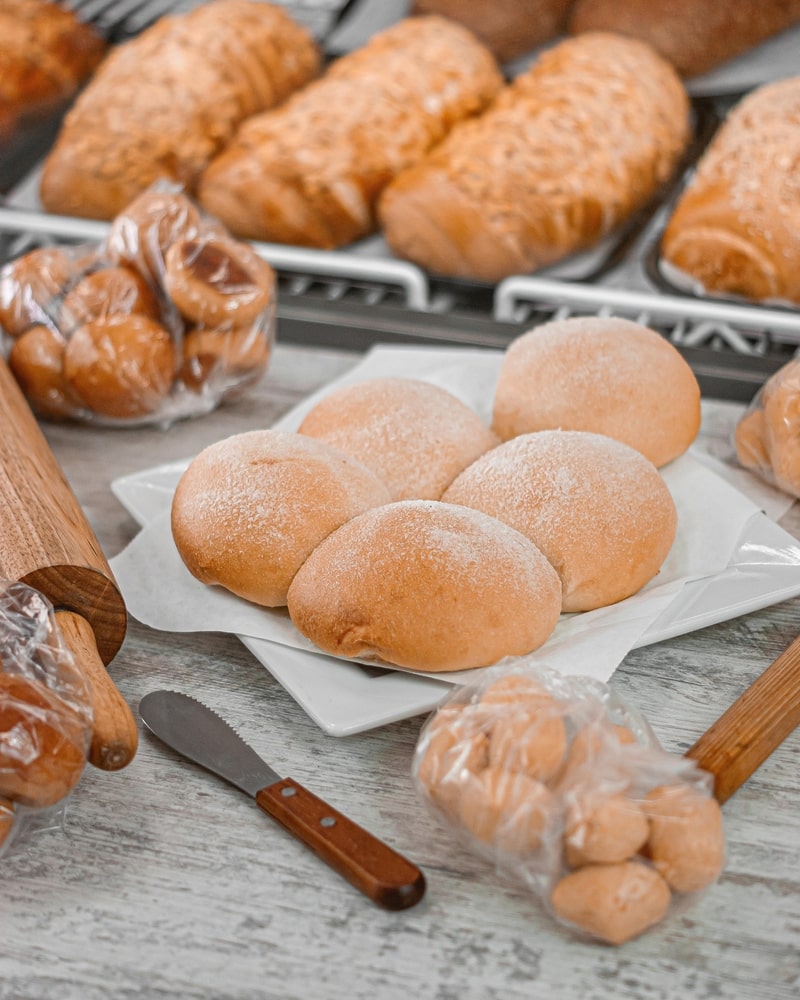The several types of sugar
used in baking
In baking, several types of sugar are used to achieve various results in terms of flavour, texture, and appearance of baked goods. The three most common types of sugar are:


Granulated Sugar:
Also known as white sugar, it is the most used type in baking. Its fine crystals dissolve easily, providing sweetness and a golden colour to baked goods. It is ideal for preparing doughs, such as sponge cakes and cookies.
Powdered sugar or confectioner’s sugar:
It is a finely powdered sugar primarily used in pastry decoration. It is obtained by grinding granulated sugar until it reaches a fine and smooth texture. It is perfect for dusting over desserts, doughnuts, or cakes.


Brown Sugar:
This type of sugar contains a higher amount of molasses, which gives it its characteristic golden colour and more pronounced flavour. It is used in baked goods that require a stronger flavour, such as gingerbread or oatmeal cookies.
How much sugar does
a bakery use per week?
The amount of sugar a bakery uses weekly depends on its size, the variety of products produced, and market demand. An average bakery can use several bags of granulated sugar each week for dough preparation and coating products. Additionally, powdered sugar is used more moderately but also in significant quantities for dessert decoration. Brown sugar, due to its stronger flavour, is used in smaller amounts but is essential for specific products aiming to highlight their flavour profile.


Effects of sugar on the texture
and colour of baked goods
Sugar plays a crucial role in the texture and colour of baked goods. During the baking process, sugar caramelizes, giving a golden colour to the crust of bread and cakes. Furthermore, it contributes to the formation of a porous structure in the products, providing them with a smoother and airier texture. The moisture content of sugar also affects the preservation of freshness and softness in products, as it retains moisture for a longer time.
Sugar as a preservative
Sugar acts as a natural preservative in baked goods by reducing the available water activity for microorganisms and enzymes that cause food spoilage. This helps extend the shelf life of products, maintaining their quality and freshness for a longer time. However, it is essential to perfectly balance the sugar content in recipes to avoid an excess that could negatively affect the texture and flavour of the products.


The use of sugar in pastry
decorations
Powdered sugar is widely used in pastry decoration. Sprinkled over cakes, doughnuts, or cookies, it creates an appealing white and shiny finish. Moreover, decorations and figures can be made using different coloured sugars.
The importance of a quality sugar
supplier for your business
The quality of the sugar used in the bakery directly impacts the excellence of the baked products. A reliable and high-quality supplier ensures a consistent and impurity-free supply. Choosing top-grade sugar is essential to maintain the consistency and distinctive flavour of the products, meeting customer expectations, and contributing to the business’s positioning in the market.

Conclusion
Sugar is an essential component in baking that goes beyond providing sweetness to baked goods. Its diverse types and characteristics play a crucial role in the texture, colour, and flavour of products, as well as in their preservation and decoration.
Understanding the importance of selecting a quality sugar supplier and using the several types of sugar appropriately is essential for achieving success in the bakery industry and meeting the expectations of discerning customers. Striving for excellence and innovation in the use of sugar in baking are key aspects to stand out in the market and stay at the forefront
Striving for excellence and innovation in the use of sugar in baking are key aspects to stand out in the market and stay at the forefront of this constantly evolving industry.

